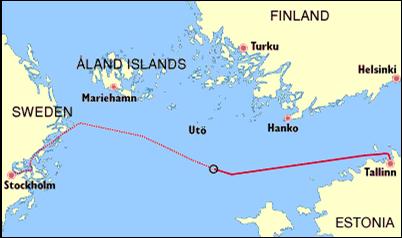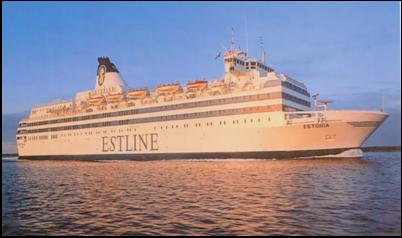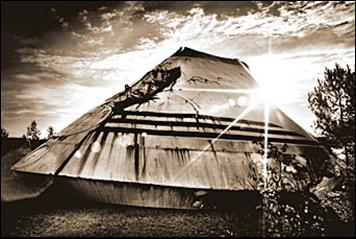M/V Estonia sank shortly before pm 02:00 September 28th,
1994. The vessel was on a scheduled voyage from Tallinn to Stockholm, with 989 people aboard.
MV Estonia was the type of ro-ro ferry, driving the car on at the bow and of at the stern
or vice versa, ro-ro is short for the ride on-ride off.
Estonia is situated on a slope on the seabed 118 ° tilt to the starboard side,
shallowest point is at 54 meters depth, amidships, about 60 meters and the deepest
point of about 80 m.
M/S Viking Sally.
Commissioned September 11, 1979 by Viking.
Built by:
Jos L Meyer Germany.
Launched with 26 apr 1980th
Transport:
Stockholm-Mariehamn-Turku, the second largest ship in the Baltic Sea when.
1990: M/V Silja Star, Stockgolm-Turku, Silja Line.
1991-92: M/V Wasa King, Umeå-Vasa-Sundsvall, Wasa Line.
1993-94: M/V Estonia, Stockholm, Tallin, Nordstrom & Thulin - Estonia Steamship.
On the ferry worked 115 crewmen.
M/S = motor ship.
MV = motor vessel.
Dimensions, weights and power outputs.
• Above all, 155.40 m
• Length between perpendiculars 137.40 m
• Breadth, molded 24.20 m
• Depth to bulkhead deck, molded 7.65 m
• Maximum depth 5.60 m
• Deadweight at max depth 3006 dwt
• Lightweight 9733 tonnes
• Gross tonnage 15 598
The vessel was equipped with two propellers
with adjustable blades, two rudders and two
thrusters.
Engine power:
• The Operation 4 x 4400 kW
• Bow thrusters 800 + 590 kW
• Electrical power 4 x 1104 kW
The vessel had a contract speed of 21 knots
at 90 percent power output of main engines (MCR). During the later years was the ship's maximum cruising speed 19 knots. That was enough for the route that the ship traffic. If this timetable would be needed to speed in open seas to be about 17.0 knots when traveling eastward and about 16.5 knots when traveling westwards.
Communications equipment was divided
between the bridge and the radio room. The ship's radio room was on deck 8, aft of the master's
cabin. Radio cab was used mainly for commercial purposes and contained the following equipment:
• Main Transmitter, Standard Radio ST-1680 A
• Main Reception Skanti AS SR-52
• emergency transmitter, Standard Radio ST-86 B. A1. A2, A3
• Emergency receiver, RL Drake RR-11
• Auto Alarms IMR A4 734/SRT B 22.901 million
• VHF Swedish Radio STR-40-ME62
In addition to the equipment in the radio room were the following equipment on the bridge:
• MF / HF radiotelephone
• VHF Swedish Radio STR-40-ME62
• VHF Sailor (1 master and 3 slaves)
• VHF Skanti
• Guard Receiver DC-300D
• NAVTEX receiver
• Lifeboat Radio IMR SOLAS III A
• Cell Phone NMT 450
• Recipient of the weather reports.
Two liquid ELTs, EPIRBs (Emergency Position-INDICATING Radio Beacons), were mounted, one on
each side of the top bridge.
Navigation equipment was of a high standard and met the requirements for
the intended traffic. The equipment had been upgraded and / or modernized several times.
At the time of the accident the bridge had the following equipment for navigation and control
of the ship:
• Radar, Atlas 9600 Arpa X-band
• Radar, Atlas 8600 Arpa S-band
• Radar, Raytheon 1650 12 SR Raycas
• Radar, Raytheon 1650 12 SR (slave to previous)
• two gyro compasses, Sperry MK 36
• Magnetic compass, Plath
• autopilot, Kockum Steermaster 2000
• Autopilot, Sperry Universal
• Speed Log, Raytheon Doppler Sonar (a shoulder)
• radio direction finding, Debeg ADF 7410
• Roll-absorbing systems, Roll Nix (SSPA)
• Fen stabilizers, Brown Brothers retractable
• Navigation Computer, Navi Master NM-1000
• GPS receiver, Shipmate 5800 C
• DGPS receiver, Shipmate 5360
• DGPS receiver, Magnavox 200
• Computer for optimization of speed / fuel consumption,
ETA-Pilot
Deadweight
Heavy Oil (IFO 180)
• Tank No. 10, 108 m³
• Tank No. 11, 108 m³
• day tank No. 36, 25 m³
• Settling Tank No. 38, 20 m³
A total of 261 250 m³ t
Marine Diesel Oil
• Tank No. 18, 33 m³
• Tank No. 41, 10 m³
A total of 43m ³ 35 t
Gas
• Tank No. 20, 12M³ 10 t
• Ballast water capacity 1175 m³
• Tank No 13 +14, 183 m³
A total of 358 360 m³ t
• Fresh water 300 t
• Various liquids 50 t
Weight on the car deck
• 40 trucks, 1 000 t
• 25 passenger cars, 9 passenger vans, two buses, 100 t
Total 1100 t
• The crew and 100 t
• Miscellaneous 95 t
Total deadweight 2300 t
Floating Condition
• In-depth, average 5.390 m
• Trim, stern 0.435 m
• Displacement 11 930 m3
• LCG from the aft perpendicular 63.85 m
• VCG keel from 10.62 m
• GM 1.17 m


